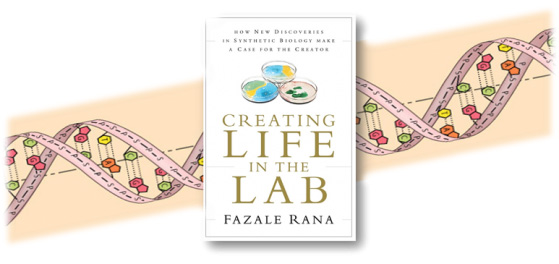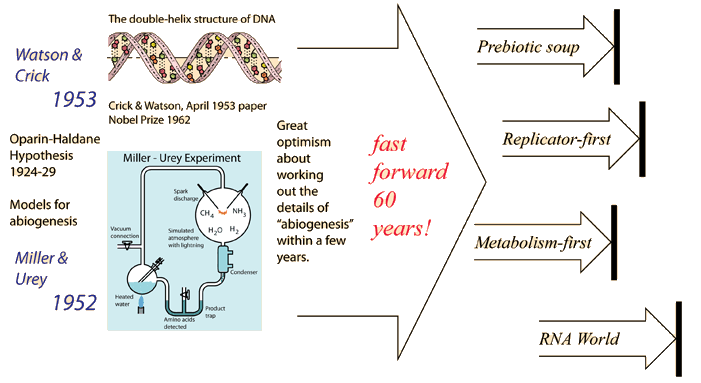Creating Life in the Lab

References
Creating Life in the Lab |
Index References |
| Book of Nature | Go Back |
The great optimism of the 1950's
This is an active graphic. Click for more detail. Watson & Crick and DNA, Miller-Urey, Oparin-Haldane hypothesis Great optimism about working out the details of "abiogenesis" Quandries of 2013 as all paths explored have encountered huge barriers
|
Index References | |
| Book of Nature | Go Back |
Simple Life?
"The cell is a simple homogeneous globule of plasm." T. H. Huxley, 1869, "Darwin's bulldog" Definition of life from Stuart Pullen's "Intelligent Design or Evolution":
Rana "Creating Life in the Lab" - Defining life Life obeys the laws of chemistry and physics Characteristics:
Elements explored in Fuz Rana's The Cell's Design.
|
Index References | |||
| Book of Nature | Go Back |
Miller-Urey Experiment
|
Index References | |||
| Book of Nature | Go Back |
Oparin-Haldane Hypothesis
|
Index References | |||
| Book of Nature | Go Back |
We might need a little more detail on those last stepsThe Oparin-Haldane Hypothesis suggests the action of natural selection in the stages leading from vesicle encapsulation of the biological building blocks to the first living cell. But before the existence of a self-replicating entity, the idea of natural selection does not seem to apply.
|
Index References | |||
| Book of Nature | Go Back |